How to Participate in AWQA

You can participate by purchasing kits ($15 + shipping) or coming up with your own way to test water. Keep in mind that the kits can be reused from year to year and the tablets don’t expire for about 2 years.
We have set up PayPal links to make it easy to purchase kits or replacement tablets (usually a classroom uses about 3 kits). All of the same resources are available on our website to incorporate a kit into a lesson. Follow this link to get your kit and be a part of a province wide citizen science project!
You can upload your AWQA kit results here!
Feel free to contact us if you have any other questions!
Let’s Make a Difference
The activities that we do in our watersheds can have tremendous impacts on the health of our waterbodies. From the oil, salt and fertilizer that are washed down our streets to the removal of shoreline vegetation, these can all affect water quality. While we can’t eliminate all sources of water contaminants and disturbances, we can take steps to reduce our impacts.
There are many things that we can do to improve water quality and the health of our watersheds. Here are some suggestions.
In our homes:
Pharmaceutical Drugs: Don’t flush your leftovers! Pharmaceutical drugs that are flushed down the toilet or thrown in the garbage can enter the water system. Take all unused, or “dead” drugs back to your local pharmacy for proper disposal.
Household Products: Avoid hazardous household products that can be harmful to our waterways. Instead, try using “environmentally friendly” products, which can be found by looking for the Environmental Choice Logo. Common ingredients like baking soda, vinegar and dish soap also provide an easy and inexpensive cleaning alternative. As a consumer, you can make informed choices.
Household Waste: Don’t throw waste down the drain or toilet. What goes down our drains goes into our rivers and lakes. Dispose of household items properly: use up all chemical products or dispose of leftovers at your local recycling or disposal facility, and put solid waste into the wastebasket.
In our yards:
Pesticides: Even small applications of chemicals in yards and gardens can eventually find their way to shared water resources. Try using alternative forms of pest control, such as hand pulling weeds, companion planting, and snipping or discarding infected plant leaves.
Fertilizers: Excessive nutrients can impact our waterways by causing increased aquatic plant and bacteria growth. As they die and decompose, oxygen is consumed by bacteria and oxygen levels in the water decrease. Try to use native plants and other natural sources to adjust the nutrient levels in your lawn/garden. If you must use fertilizers, apply only what your plants need.
Street Watch: Most of the water that runs off streets and through our storm drains is not treated at the sewage treatment plant before entering our waterways. This means that anything (oil, soap, salt, pet waste) that is on our streets makes its way into our water system. Ensure that only clean rainwater makes it into the storm drain near your house.
In our communities:
- Participate in AWQA activities.
- Join your local watershed stewardship group: They are always in need of more volunteers and different talents.
- Read up on environmental issues.
- Inform your friends and family.
- Be an active citizen: participate in public hearings, sit on an advisory committee, support federal, provincial and municipal action on water issues – take time to participate in these opportunities!
For more ideas on how we can help improve the water quality in our watersheds, check out these websites:
Alberta Lake Management Society



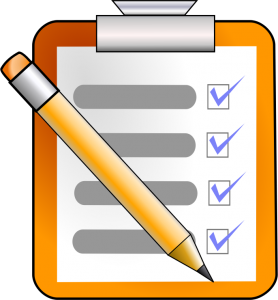 The members of the steering committee will continue to play a strong role in facilitating and tracking implementation actions. This includes any actions they were responsible for, as well as tracking other committees and sector’s actions and progress made towards achieving the plan’s outcomes. Ongoing communication is essential to successful implementation and achieving outcomes, therefore a regular reporting mechanism could be set up in order to provide regular evaluation of the plan.
The members of the steering committee will continue to play a strong role in facilitating and tracking implementation actions. This includes any actions they were responsible for, as well as tracking other committees and sector’s actions and progress made towards achieving the plan’s outcomes. Ongoing communication is essential to successful implementation and achieving outcomes, therefore a regular reporting mechanism could be set up in order to provide regular evaluation of the plan.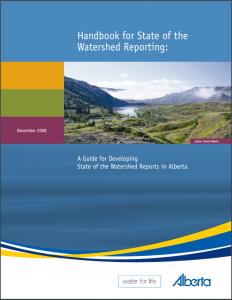
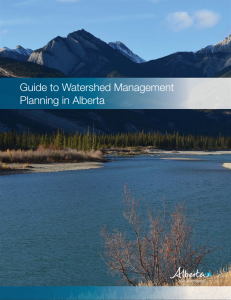
 Reporting is an essential component of any watershed management planning and implementation process. There are two main types of reporting that should be shared with stakeholders on a regular basis: implementation reporting & effectiveness reporting.
Reporting is an essential component of any watershed management planning and implementation process. There are two main types of reporting that should be shared with stakeholders on a regular basis: implementation reporting & effectiveness reporting. There is no limit to the number or types of lake management actions, but they typically fall into the categories on the right.
There is no limit to the number or types of lake management actions, but they typically fall into the categories on the right.
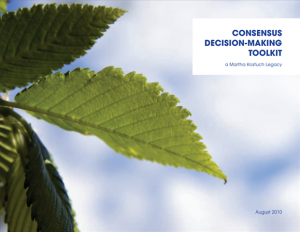
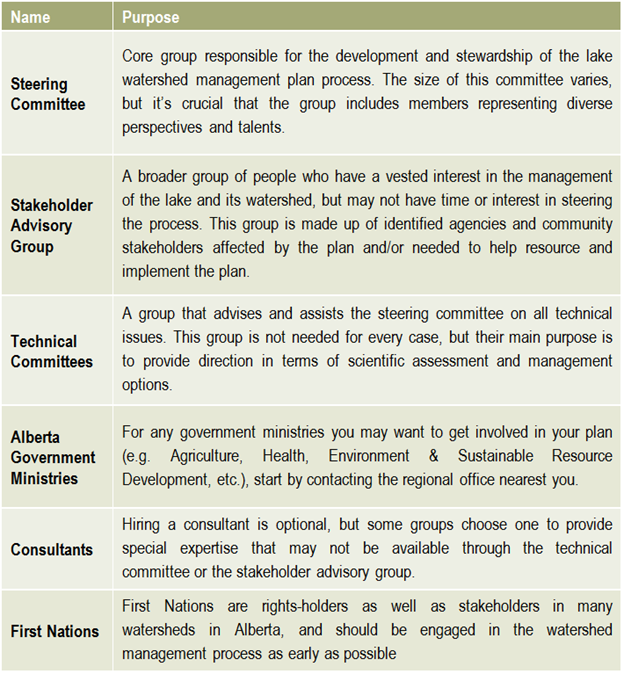 Helpful resources
Helpful resources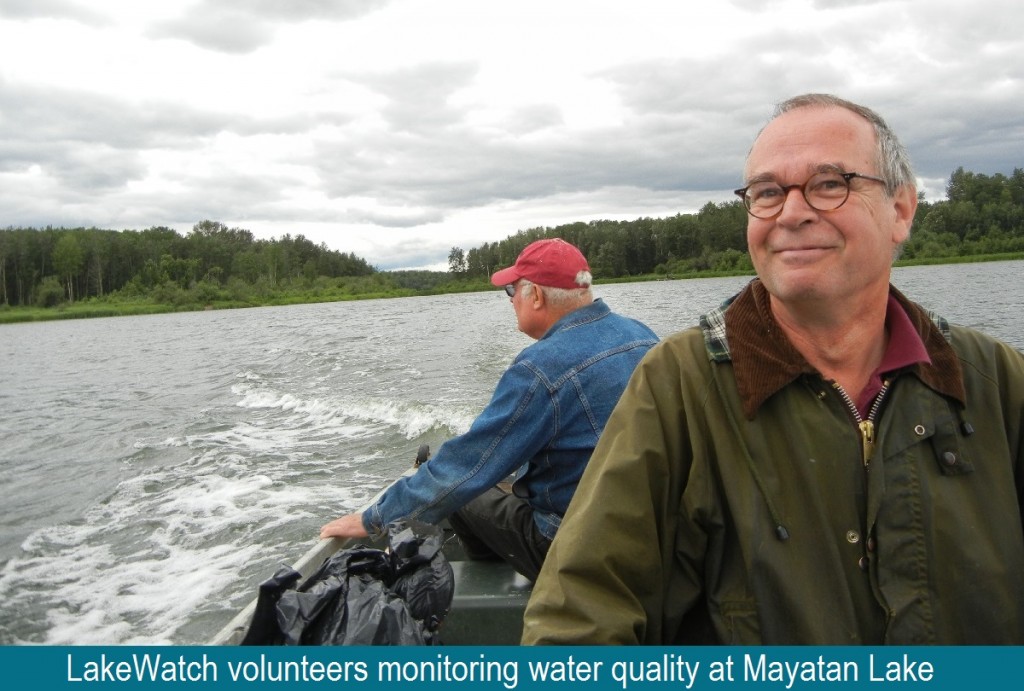 The development of a lake watershed management plan provides the guidance needed to implement activities, but the plan cannot be static. Monitoring the performance of your management actions is essential to understanding whether your goals have been met, and whether further actions are needed. Monitoring and evaluating the implementation and effectiveness of a lake watershed management plan allows assessment of progress towards the goals and objectives of the plan, identification of problems and opportunities, and a collection of critical information required when performing a 5 or 10 year review of the plan.
The development of a lake watershed management plan provides the guidance needed to implement activities, but the plan cannot be static. Monitoring the performance of your management actions is essential to understanding whether your goals have been met, and whether further actions are needed. Monitoring and evaluating the implementation and effectiveness of a lake watershed management plan allows assessment of progress towards the goals and objectives of the plan, identification of problems and opportunities, and a collection of critical information required when performing a 5 or 10 year review of the plan.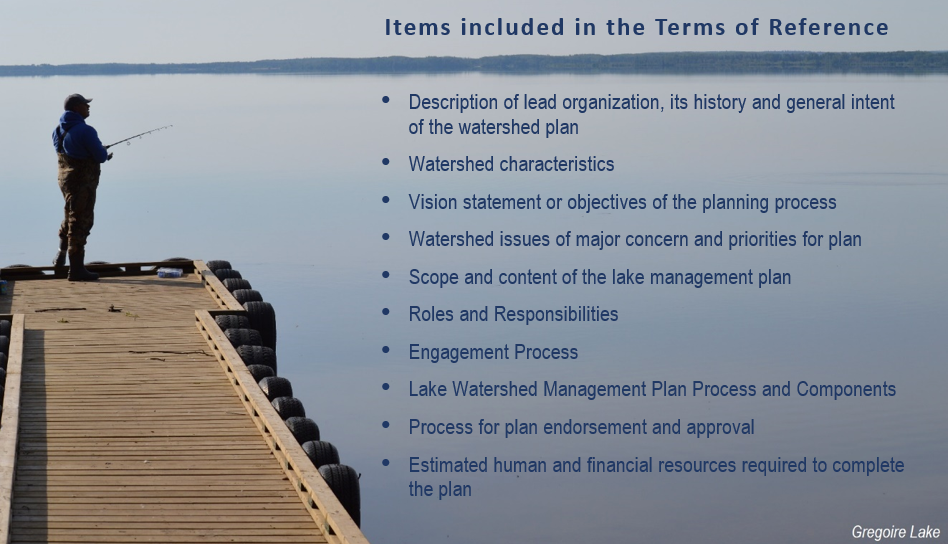
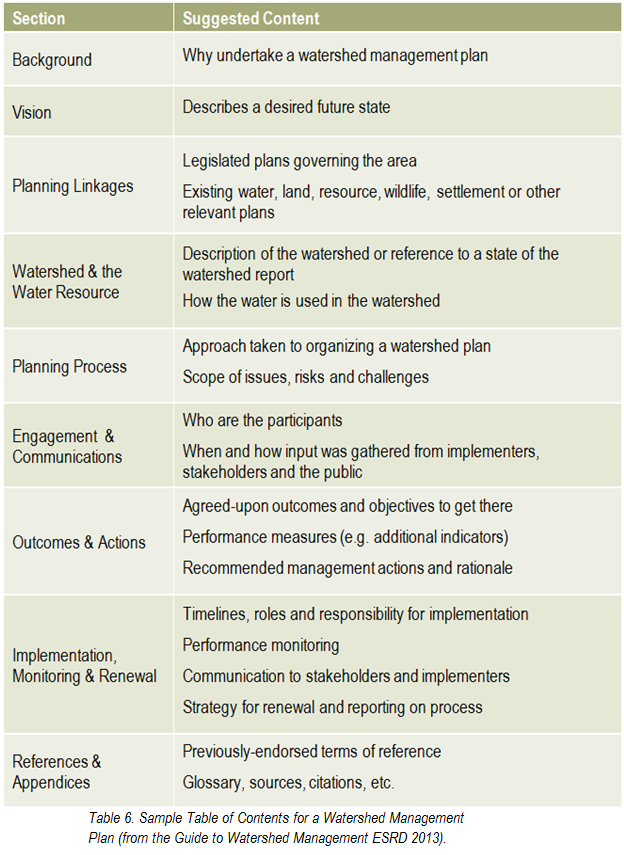
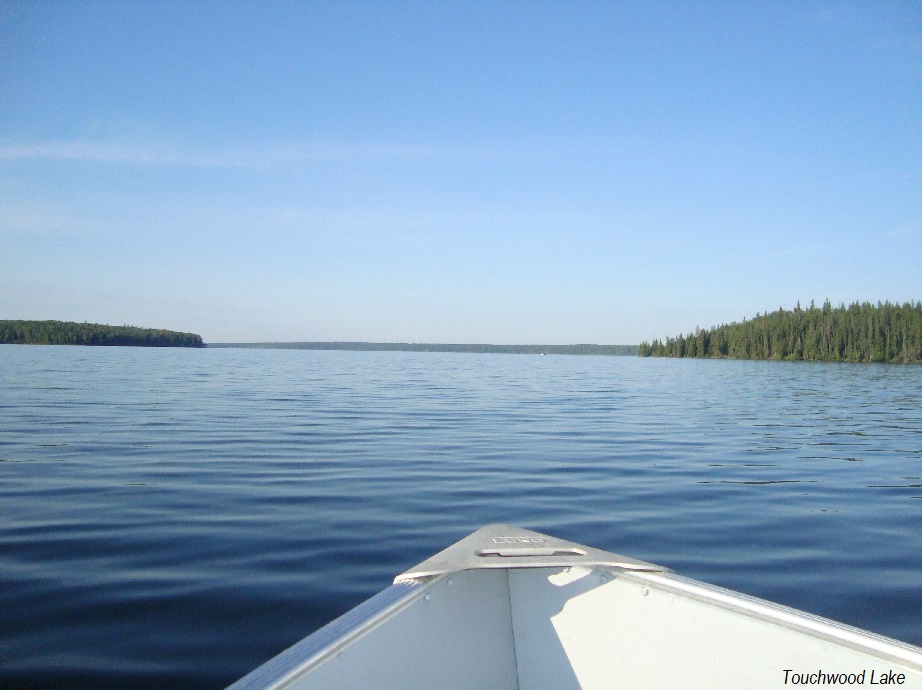 What has the monitoring results of the plan and of the indicators shown? Is there a need to modify the plan? It is important that the lake watershed management plan does not just sit on a shelf. Information gaps should be addressed, action items need to be managed, completed, and evaluated to best address the needs of the lake. Always keep in mind the vision: if the actions taken are not bringing the lake closer to that vision, then the plan needs to be modified. Consider updating both the state of the watershed and the lake watershed management plans at regular intervals to make sure that the actions taken were achieving the desired outcomes and to evaluate what work still needs to be done.
What has the monitoring results of the plan and of the indicators shown? Is there a need to modify the plan? It is important that the lake watershed management plan does not just sit on a shelf. Information gaps should be addressed, action items need to be managed, completed, and evaluated to best address the needs of the lake. Always keep in mind the vision: if the actions taken are not bringing the lake closer to that vision, then the plan needs to be modified. Consider updating both the state of the watershed and the lake watershed management plans at regular intervals to make sure that the actions taken were achieving the desired outcomes and to evaluate what work still needs to be done. Once a plan has been approved by all affected sectors and officially endorsed and released by the steering committee, then implementation can begin in full. Action projects can be large and comprehensive, or made smaller by staging projects over time or into modules that can be tackled one at a time. Fundraising is an issue that many community groups may find intimidating, but experience with programs such as the Pine Lake Restoration Program (see
Once a plan has been approved by all affected sectors and officially endorsed and released by the steering committee, then implementation can begin in full. Action projects can be large and comprehensive, or made smaller by staging projects over time or into modules that can be tackled one at a time. Fundraising is an issue that many community groups may find intimidating, but experience with programs such as the Pine Lake Restoration Program (see 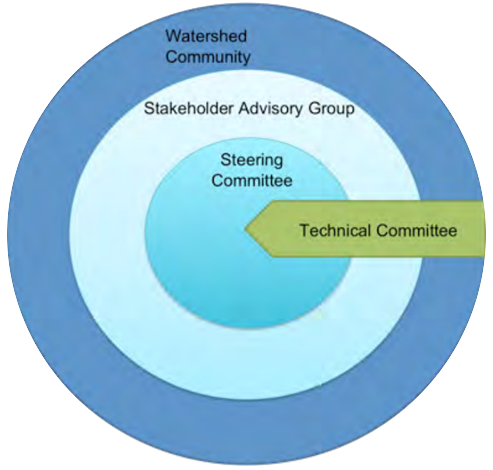 This graphic describes how the various committees and groups will work and interact together. The circle size depicts the approximate number of people involved, and the circles overlapping indicates that some individuals may reside in all of the circles and participate in multiple committees as part of the planning process. The technical committee is shown as an arrow, indicating that it is independent and has relatively few people, and yet it interacts with all of the groups. This graphic may look different depending on the lake and the people involved, and a detailed structure should be agreed upon and described in the plan’s Terms of Reference (Step 6).
This graphic describes how the various committees and groups will work and interact together. The circle size depicts the approximate number of people involved, and the circles overlapping indicates that some individuals may reside in all of the circles and participate in multiple committees as part of the planning process. The technical committee is shown as an arrow, indicating that it is independent and has relatively few people, and yet it interacts with all of the groups. This graphic may look different depending on the lake and the people involved, and a detailed structure should be agreed upon and described in the plan’s Terms of Reference (Step 6).